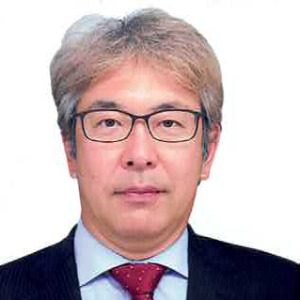Title : Soil physical property assessment of large-scale paddy fields using autonomous robots
Abstract:
In recent years, due to the effects of climate change, intense rainfall exceeding 50 mm per hour has become more increasing. Large-scale flooding caused by linear rainbands and massive typhoons occurs almost every year somewhere in Japan. Agricultural fields are also suffering significant damage due to waterlogging. In agricultural production, improving soil physical properties, particularly field drainage, has become a more urgent issue than soil chemical properties. Therefore, from the perspective of Soil Health, we have been developing technology to efficiently evaluate soil physical properties in fields within a short time. A cone penetrometer can obtain soil hardness data at 1 cm increments up to a depth of 60 cm in 60 to 90 seconds. Using this device, we collected data in an about 10-meter grid within fields and developed a technique to assess field drainage based on spatial distribution of soil hardness. To reduce labor and improve efficiency in data collection, we have also been working on the development of a robot that automatically measures soil hardness. On March 11, 2011, the Great East Japan Earthquake triggered a tsunami that damaged the coastal areas of Tohoku and Kanto, including Fukushima Prefecture. A project was initiated to restore the tsunami-affected paddy fields. In a large-scale 1-hectare paddy fields in Minamisoma City, Fukushima Prefecture, we used an autonomous penetration-type soil hardness measurement robot to evaluate soil physical variability and estimate field drainage, comparing the results with those obtained using a conventional cone penetrometer. The autonomous penetration-type soil hardness measurement robot, which was in the prototype stage, began full-scale operation in this project. This will be the world's first presentation of operational results from an autonomous soil hardness measurement robot.



